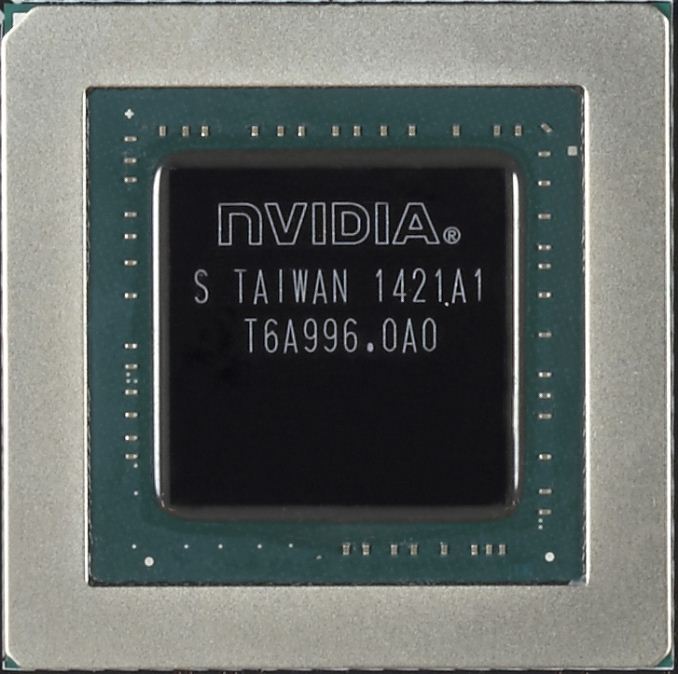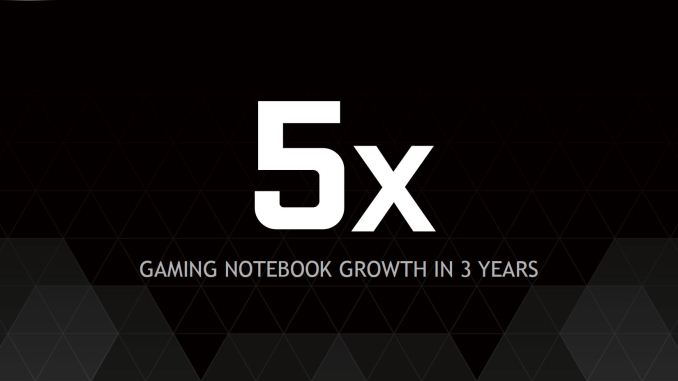NVIDIA GeForce GTX 980M and GTX 970M: Mobile to the Maxwell
by Jarred Walton on October 7, 2014 9:00 AM EST
Every year NVIDIA launches quite a few new products; some are better than others, but they're all interesting. This fall, the big news is Maxwell 2.0, aka GM204. Initially launched last month as the GTX 980 and GTX 970, NVIDIA is hopefully changing the way notebook gamers get treated by launching the mobile version of the GM204 just one month later.
We've already covered all of the new features in the desktop launch, so things like DSR, FXAA, VXGI, DX12, and GameWorks are all part of the notebook launch marketing materials. Of course, as a notebook GPU there are a few extra features available that you don't see on desktop GPUs, mostly because such features aren't really needed. Optimus Technology has been around for several years now so there's not much to add; it allows laptops to dynamically switch between the lower power integrated graphics when you're not doing anything that requires a faster GPU, and it can turn on and utilize the faster discrete NVIDIA GPU when needed. BatteryBoost is a related technology that was first introduced with the GTX 800M series of GPUs, and it seeks to improve gaming battery life. Our test platform at the time didn't really give us the gains we were hoping to see, but NVIDIA assures us that the new GM204 mobile graphics chips will do much better at providing decent battery life while running games. We'll be diving into this in more detail once we get our test notebooks.
Speaking of which, no, we don't have a notebook yet. It was supposed to arrive late last week but ended up shipping Monday instead, which means it should be arriving about the time you're reading this. We'll be posting a separate look at gaming performance as soon as we're able, and we'll have a full review of the MSI GT72 in the coming week as well. For now, what we have are specifications for the mobile versions of GM204 and an overview of what to expect from the mobile versions of NVIDIA's new GPU.
If you've been following the computing industry to any degree over the past few years, a few trends are clearly becoming ever more important. One is that many PC desktop users are migrating to laptops and notebooks, but perhaps just as important is the migration of PC users to smartphones and tablets. There are numerous reasons for the shift – convenience along with increasing performance from handheld devices – but the result is a reduction in the growth of the PC industry. The good news for NVIDIA is that gaming notebooks are still a growing market, though how you define a "gaming notebook" is certainly something that can be manipulated.
NVIDIA's own figures show a 5X growth in gaming notebook sales during the past three years, so clearly there's a demand for getting more graphics performance into laptops. In fact, that's generally the number one desire from notebook gamers: "I want desktop class performance!" NVIDIA is aiming to do just that with the launch of the GTX 980M and GTX 970M.












68 Comments
View All Comments
chizow - Tuesday, October 7, 2014 - link
To finish the thought, I would be a lot more open to something like a Shield Tablet or Portable and use the remote GameStream feature to remotely play games on my PC, but of course that is hit or miss depending on the quality of connection where I am travelling.JarredWalton - Tuesday, October 7, 2014 - link
Heh, the market research is from NVIDIA, who is in turn citing... I'm not entirely sure. And keep in mind that when NVIDIA moved the 850 series from the GT to the GTX line, they inherently gave "gaming notebooks" a much larger piece of the pie. I also have to say that Optimus has helped a lot with the sales of gaming notebooks, as there's less need to compromise these days. Then toss in some nice designs like those from Razer and gaming notebooks can even be sleek and sexy as opposed to big and boxy.I have no doubt NVIDIA is selling more GPUs for gaming notebooks today than three years ago, and perhaps it's even 5X as many, but certainly a big part of the increase comes from the plateau in gaming requirements. If you're willing to turn off AA (especially SSAA) and run at High detail instead of Ultra, a very large percentage of games run quite well on anything above GTX 670M (or equivalent). Will we continue to see that sort of sales growth for the next three years? Probably not.
chizow - Tuesday, October 7, 2014 - link
Ah ok that makes sense, Nvidia does tend to throw out some interesting figures and given they are on the supply end of things, that can make their counts pretty accurate (ex: Jensen Huang revealed during his Game24 keynote GTX 680 sold ~10m units). They also have the deep pockets to pay for the research from firms like JPR, Mercury Research, Gartner etc.But I guess you are right as well regarding a lot entrants into this market. About a decade ago it was just Alienware and FalconNW, then it was CyberPower, iBuyPower etc, then the big Taiwanese OEMS got into the game and now you have gaming centric companies like Razer breaking into the market. They are all obviously going after a pie that is getting bigger or they wouldn't bother.
Looking forward to the test results, but again, for my own current usage patterns I can't see myself buying a gaming notebook. When I travel now its usually local, short-term or all business and I carry my work Dell Ultrabook or Surface Pro 3, no time for gaming. Competent laptop gaming would be interesting though for a student or business traveler that travels for most of the week or 50%+.
jtd871 - Tuesday, October 7, 2014 - link
Where these could really shine is in SFF/Brix/NUC-like units, especially if the thermals and prices are reasonable. Steamboxen, anyone?chizow - Tuesday, October 7, 2014 - link
Yeah absolutely, but for Steamboxes you can already go with a full-sized GTX 970/980 (if you can find one!). But yes these would go great in a BRIX unit, although I personally think the BRIX units with GTX 760 were asking a little bit too much (like $700 I think?).nathanddrews - Tuesday, October 7, 2014 - link
Where are the integrated G-Sync laptops? Seems like a PRIME market for such a technology. We're already talking high-end prices, so what's another $100-200 for something that mobile GPUs most definitely need?BigT383 - Tuesday, October 7, 2014 - link
+1. I was wondering this as well- As a laptop manufacturer, when you're selling the display and the GPU as a single unit it seems like it would be even easier to support the G-Sync technology.Kevin G - Tuesday, October 7, 2014 - link
This would be an interesting development and something a premium manufacturer could use to justify their premium price and/or differentiate from themselves from the crowd.I suspect there isn't room for the the additional circuitry used in G-sync displays. There is also the power factor which isn't great has to be accounted for in a notebook vs. stand alone monitor.
Basically until nVidia fully integrates their G-Sync technology into a chip, I'd be surprised to see it in a laptop.
chizow - Tuesday, October 7, 2014 - link
Yeah, the module and heatsink probably could not be easily integrated into a laptop chassis and the premium on G-Sync is still pretty high at $150-200 over comparable non-G-Sync module. Add to that the possibility some users might choose to dock the laptop to a TV or bigger display and you'd lose G-sync functionality.nathanddrews - Tuesday, October 7, 2014 - link
Not if you connect to a G-Sync display using DP (assuming the notebooks have DP out).